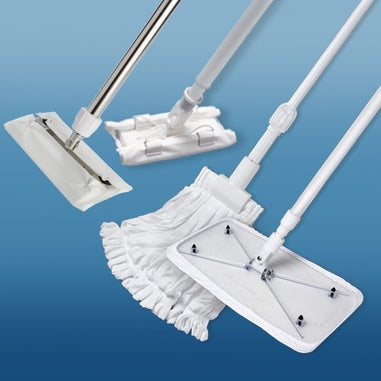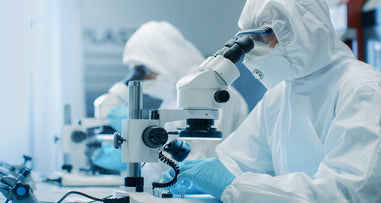- No products in the cart.
In the realm of high-tech industries, where precision and reliability are non-negotiable, cleanroom environments play a pivotal role. Among the specialized cleanroom facilities, cleanroom dry rooms stand out as essential components for ensuring optimal production conditions. These controlled spaces, meticulously designed to maintain low humidity levels, go beyond moisture control – they are the guardians of quality, integrity, and innovation in sectors ranging from electronics and semiconductors to pharmaceuticals and aerospace. In this blog post, we delve into the indispensable role of cleanroom dry rooms, their significance in high-tech industries, and how they contribute to driving excellence in manufacturing and research.
The Core Principles: Moisture Management and Beyond
Cleanroom dry rooms are engineered environments where moisture levels are meticulously controlled to extremely low levels. Unlike traditional cleanrooms that maintain general cleanliness, cleanroom dry rooms are tailored to prevent the intrusion of even the minutest moisture particles. Humidity control within these rooms is paramount, as excessive moisture can compromise the integrity of sensitive materials, lead to corrosion, degrade electronic components, and impact overall product quality.
Beyond moisture management, cleanroom dry rooms prioritize other critical factors, such as temperature stability, particle control, and minimized chemical contamination. These combined efforts create an ultra-clean, stable environment conducive to manufacturing high-precision components and conducting advanced research.
The Importance of Moisture Control in Cleanroom Dry Rooms
Moisture is one of the biggest contaminants in cleanroom dry rooms. Even small amounts of moisture can cause problems, such as:
- Corrosion of electronic components
- Insulation breakdown
- Degradation of materials
- Adhesion problems
- Contamination of products
To prevent these problems, it is essential to maintain very low levels of moisture in cleanroom dry rooms. The ideal humidity level for most cleanroom dry rooms is between 0 and 5%.
The Benefits of Using Cleanroom Dry Rooms in High-Tech Industries
Cleanroom dry rooms offer a number of benefits for high-tech industries, including:
- Improved product quality: By controlling moisture levels, cleanroom dry rooms help to ensure that electronic components and devices are free from moisture contamination. This can lead to improved product quality and reliability.
- Increased productivity: Cleanroom dry rooms create a more stable environment for manufacturing, which can lead to increased productivity.
- Reduced costs: By preventing moisture-related problems, cleanroom dry rooms can help to reduce costs associated with product recalls, warranty repairs, and downtime.
- Improved safety: Cleanroom dry rooms can help to improve safety by reducing the risk of fire and explosion.
High-Tech Industries and Cleanroom Dry Rooms
Cleanroom dry rooms find their natural home in a multitude of high-tech industries, each with its unique demands for precision and quality assurance.
1. Electronics and Semiconductors: The Heart of Innovation
In the world of electronics and semiconductors, where microscopic circuits and components drive innovation, cleanroom dry rooms are indispensable. The presence of even a tiny moisture particle can result in catastrophic malfunctions or performance degradation. Cleanroom dry rooms provide a controlled haven for wafer fabrication, semiconductor assembly, and intricate chip manufacturing. By ensuring ultra-low humidity levels, these environments safeguard against yield losses, enhance product longevity, and propel technological advancements.
2. Pharmaceuticals: Pursuing Purity and Efficacy
The pharmaceutical industry relies on cleanroom dry rooms to preserve the efficacy and stability of drugs, vaccines, and medical devices. The manufacturing of sensitive pharmaceutical compounds demands stringent humidity control to prevent chemical degradation, moisture-induced reactions, and altered potency. Cleanroom dry rooms play a pivotal role in maintaining the purity of formulations, enhancing shelf life, and meeting regulatory standards for pharmaceutical production.
3. Aerospace and Defense: Aeronautical Precision
In the aerospace and defense sectors, cleanroom dry rooms contribute to the assembly of intricate components, sensors, and communication devices. These controlled environments prevent moisture-induced corrosion, ensuring the reliability and functionality of critical aerospace systems. From satellite electronics to avionics, cleanroom dry rooms play a crucial role in safeguarding aerospace technology against the harsh conditions of outer space and demanding operational environments.
Design and Maintenance: Keys to Success
The effectiveness of cleanroom dry rooms lies in their meticulous design, construction, and maintenance. Key considerations include advanced air handling systems, dehumidification units, filtration systems, and effective sealing to prevent moisture ingress. Temperature and humidity monitoring are continuously maintained to ensure adherence to precise parameters. Regular maintenance, calibration, and adherence to international standards are essential to sustaining the integrity of cleanroom dry rooms.
Dry Cleanroom Lab Supplies
In addition to the cleanroom dry room itself, there are a number of other supplies that are essential for a dry cleanroom lab. These supplies include:
- Personal protective equipment (PPE): Workers in dry cleanroom labs must wear appropriate PPE to protect themselves from contaminants. This PPE may include hairnets, lab coats, gloves, and face masks.
- Cleanroom wipes: Cleanroom wipes are used to clean and disinfect surfaces in the dry cleanroom lab. These wipes are made from lint-free materials and are designed to remove even the smallest particles of dust and debris.
- Cleanroom tools: There are a number of specialized tools that are used in dry cleanroom labs. These tools are designed to minimize the introduction of contaminants into the lab environment. Some examples of cleanroom tools include tweezers, scalpels, and pipettes.
- Cleanroom consumables: Dry cleanroom labs also require a variety of consumables, such as media, buffers, and chemicals. These consumables must be of the highest quality and must be free from contaminants.
By using the appropriate supplies, workers in dry cleanroom labs can help to ensure that the environment is clean and free from contaminants. This is essential for the production of high-quality, reliable products.
Conclusion
Cleanroom dry rooms are the embodiment of precision, ensuring that high-tech industries can operate at the forefront of innovation without compromising quality or performance. These controlled environments, meticulously engineered to manage moisture and other contaminants, serve as the foundation for manufacturing cutting-edge electronics, life-saving pharmaceuticals, and resilient aerospace technology. As technology continues to advance and industries evolve, cleanroom dry rooms remain an essential tool in the pursuit of excellence, propelling us toward a future where precision knows no bounds.
For over 40 years, Lab Pro Inc. has been committed to delivering highest quality cleanroom lab supplies, hand tools, lab equipment, chemicals, distance learning kits, and PPE apparel. Renowned by global medical device companies and laboratories, we ensure exceptional quality in every product. Contact us online or call 888-452-2776 to learn more. Discover top-notch lab supplies and elevate your experiments today!












































